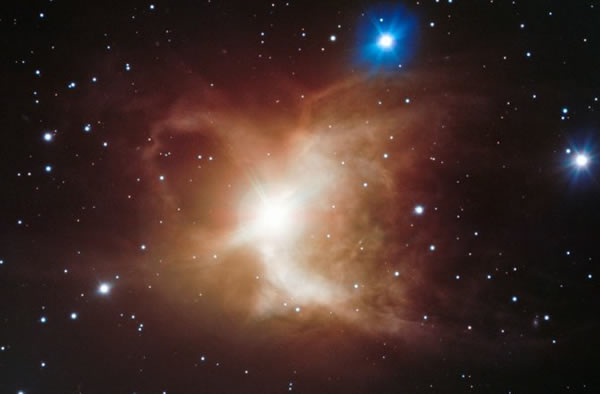Dying Star Says 'Cheers' With Toby Jug Nebula
Located about 1200 light-years from Earth in the southern constellation of Carina (The Ship’s Keel), the Toby Jug Nebula, more formally known as IC 2220, is an example of a reflection nebula. Click image to see a high-resolution version.
The European Southern Observatory's Very Large Telescope (VLT) has taken a close, infrared look at a giant celestial mug. No, it's not a comedy-sized tankard discarded into orbit by a careless space station astronaut -- it's a beautiful nebula that resembles a giant jug with a handle.
Located some 1,200 light-years away in the constellation of Carina, the so-called Toby Jug Nebula (also known as IC 2220) is a reflection nebula. Reflection nebulae are lit-up from the inside by a star, in this case a massive red giant that is approximately five times the mass of our sun and entering the latter stages of its evolution.
Massive stars live fast and die young, so although this red giant is only 50 million years old, it has used up all its reserves of hyrogen fuel that sustained the fusion in its core. It has now puffed up, burning heavier elements, blasting gas and dust into interstellar space -- a precursor to death. By comparison, our yellow dwarf sun is around 4.5 billion years old and is only considered to be "middle aged," although it will go through a similar red giant phase in approximately 5-6 billion years time.
Carbon and heat-resistant compounds like titanium dioxide and calcium oxide have been detected in the nebulous material. In this case, the Toby Jug is also apparently glazed with silicon dioxide, the likely compound that is giving the nebula its glint, reflecting infrared starlight.(Oct 14, 2013 10:30 PM ET // by Ian O'Neill)












